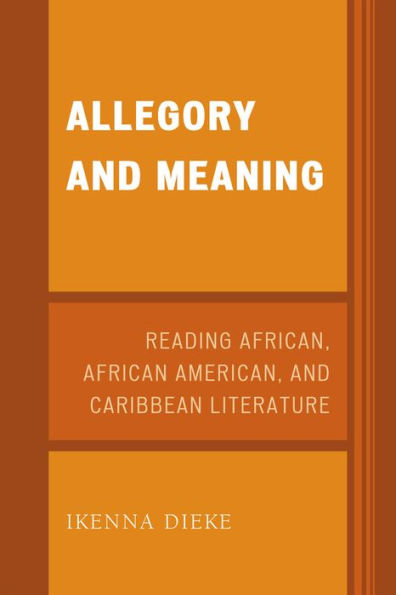Allegory and Meaning: Reading African, African American, and Caribbean Literature
Allegory and Meaning is the study of the allegorical-cum-symbolic mode in selected African, African American, and Caribbean literary works. It argues that the domain of allegory in these works constitutes, at bottom, a contested site of paradoxes. The discussion of these African, African American, and Caribbean writers' use of the allegorical mode is a serious attempt to recover the subtext of their works. The stories these writers tell are quite often thinly veiled. The events, characters, space, and time in their narratives are presented, first in their literal context, and then, in the other, larger context, the ideas that they are intended to convey or the significance they potentially bear. From Soyinka's political allegory in Season of Anomy to Okigbo's astral kratophany in Labyrinths; from Baraka's agonistic moral allegory in Palace of the Peacock, and V.S. Reid's apocalyptic allegory in New Day, these writers demonstrate the processes of double signification where the order of words represents actions and characters, and the actions and characters in turn represent ideas.
1101482189
Allegory and Meaning: Reading African, African American, and Caribbean Literature
Allegory and Meaning is the study of the allegorical-cum-symbolic mode in selected African, African American, and Caribbean literary works. It argues that the domain of allegory in these works constitutes, at bottom, a contested site of paradoxes. The discussion of these African, African American, and Caribbean writers' use of the allegorical mode is a serious attempt to recover the subtext of their works. The stories these writers tell are quite often thinly veiled. The events, characters, space, and time in their narratives are presented, first in their literal context, and then, in the other, larger context, the ideas that they are intended to convey or the significance they potentially bear. From Soyinka's political allegory in Season of Anomy to Okigbo's astral kratophany in Labyrinths; from Baraka's agonistic moral allegory in Palace of the Peacock, and V.S. Reid's apocalyptic allegory in New Day, these writers demonstrate the processes of double signification where the order of words represents actions and characters, and the actions and characters in turn represent ideas.
46.99
In Stock
5
1

Allegory and Meaning: Reading African, African American, and Caribbean Literature
188
Allegory and Meaning: Reading African, African American, and Caribbean Literature
188Paperback
$46.99
46.99
In Stock

Product Details
| ISBN-13: | 9780761851219 |
|---|---|
| Publisher: | University Press of America |
| Publication date: | 09/02/2010 |
| Pages: | 188 |
| Product dimensions: | 6.09(w) x 9.14(h) x 0.44(d) |
About the Author
From the B&N Reads Blog
